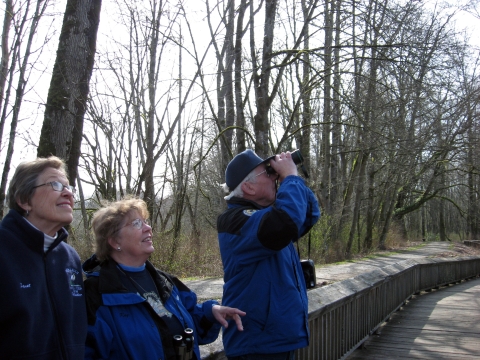Facility Activities
Billy Frank Jr. Nisqually National Wildlife Refuge is a perfect destination to be immersed into nature and leave the hustle and bustle of urban life behind. Once on the trails, visitors will be immersed into the different habitats representing the Nisqually River Delta. The refuge provides opportunities to explore the natural and cultural history of the southern Puget Sound region through exhibits in the Norm Dicks Visitor Center or from interpretive panels along the trails. Walk along the Nisqually Estuary Boardwalk and observe harbor seals resting on salt marsh salt marsh
Salt marshes are found in tidal areas near the coast, where freshwater mixes with saltwater.
Learn more about salt marsh islands, walk the Riparian Forest trail and look for salmon in the slough, or walk the infamous Nisqually Estuary Boardwalk that extends one mile over the Nisqually estuary. Seasonal guided walks and lectures are offered, and the environmental education program provides students with hands-on learning experiences in nature. Each season reveals different vistas and viewing opportunities.
